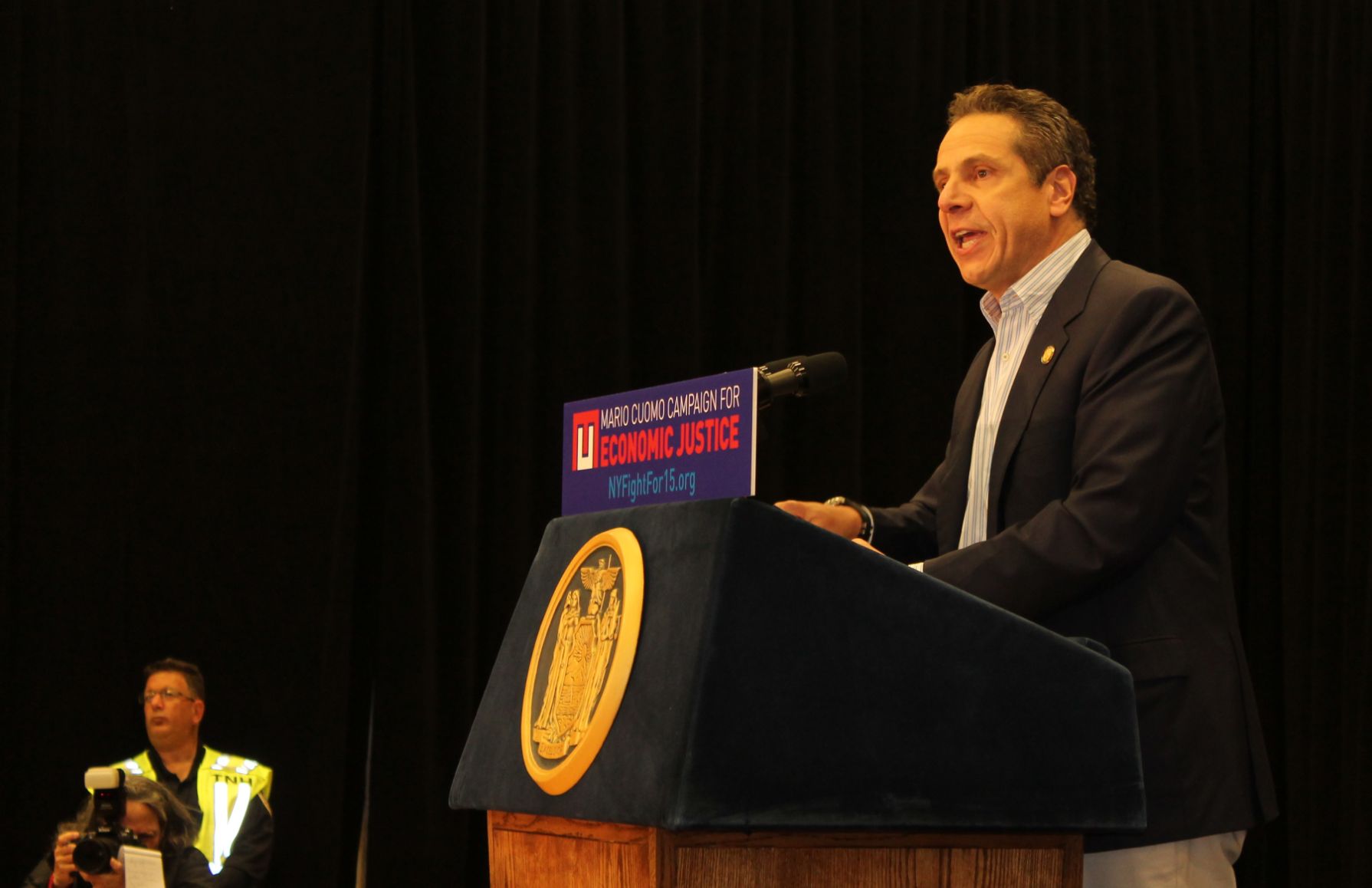Officials from villages along the Long Island Rail Road’s Main Line went to Gov. Andrew Cuomo’s Manhattan office Friday afternoon thinking they’d be discussing Cuomo’s plans for a third LIRR track with one of his aides and the heads of the Metropolitan Transportation Authority and the Long Island Rail Road.
The transit chiefs weren’t there when they arrived, but the governor was.
Some village officials who were at the meeting said Cuomo’s visit was proof he’s serious about listening to their communities’ concerns about the project he announced Jan. 5, but the lack of specifics at the meeting still left them with questions.
“He is not trying to shove it down our throats, or he appears not to be at this point,” Village of Mineola Deputy Mayor Paul Pereira said. “… At the very least he’s trying to show some good faith. I wish it had been done before he made the announcement, that we had this meeting, but it is what it is.”
The mayors of New Hyde Park, Floral Park and Westbury joined Pereira at the Feb. 19 meeting, along with Mineola Village Clerk Joseph Scalero and Village of Plandome Heights Mayor Barbara Donno, president of the Nassau County Village Officials’ Association and an aide to state Sen. Jack Martins.
While Cuomo didn’t present a detailed plan, Pereira said, he ran the meeting and “assured” village officials the project to put a third track along 9.8 miles of the Main Line from Floral Park to Hicksville was not the same plan that met community opposition and was ultimately derailed in the mid-2000s.
It would be a “design and build” project like the new Tappan Zee Bridge, Pereira said, meaning private builders would handle construction, not the MTA or the LIRR.
The project would be less intrusive, Cuomo told them, built within the LIRR’s existing right of way with few or no property takings, Pereira said. The old plan called for about 250 property acquisitions, while the MTA has said the new plan would require about 50.
Cuomo also said the project would eliminate all seven street-level crossings along the stretch, including two in Mineola and three in New Hyde Park, according to Pereira and Floral Park Mayor Thomas Tweedy.
“His real initial push was that these grade crossings have to be eliminated because they are dangerous and there’s been too many fatalities, and they only hinder traffic and, of course, public safety,” Pereira said.
New Hyde Park Mayor Robert Lofaro has said his village would remain opposed to a third track unless the plan eliminated the village’s grade crossings, which back up traffic on New Hyde Park Road, Covert Avenue and South 12th Street during peak train travel hours.
Efforts to reach Lofaro were unavailing.
Cuomo agreed the crossings are problematic, Pereira said, but told the mayors the $500 million price tag of eliminating them separate from a third track would be prohibitive.
“I think he’s dangling a carrot a little bit, and we get that, and I think at the end of the day we’ll have to judge whether the carrot is worth the stick,” Pereira said.
Both Pereira and Tweedy said they don’t think eliminating the grade crossings and the third track are mutually exclusive.
Cuomo told the officials the project’s primary purpose is not to facilitate a reverse commute from New York City or increase freight traffic, but to make the LIRR run more efficiently.
A third track would create a passing lane to let railroad operators route running trains around disabled ones, Pereira and Tweedy said.
Tweedy said he told Cuomo the LIRR has an aging infrastructure and operational issues a third track wouldn’t fix, but other, smaller-scale fixes would, such as the construction of a passenger train yard in Huntington.
“Those solutions aren’t megaprojects. Those solutions aren’t legacies,” Tweedy said. “Those solutions are operations, and operations are what we have to deal with.”
Cuomo maintained the importance of a third track, Tweedy said, but he was receptive to and took note of community-specific issues the village officials raised, such as the impact on Floral Park’s pool complex and the residential developments in Mineola.
Cuomo transportation spokeswoman Beth DeFalco has said the third track project will involve an extensive community outreach effort that will include door-to-door meetings and a website with direct access to planners.
Pereira said Cuomo wants to have another meeting with the mayors that includes representatives from the MTA and LIRR, as well as the engineers hired to evaluate the project.
Officials from several affected villages have met with LIRR President Patrick Nowakowski since the project was announced, and have also held conference calls with each other and Martins, who opposes the third track.
It was good to hear information about the project “from the horse’s mouth,” Pereira said, but he’s interested to hear from planners on the transit side to confirm what Cuomo told them.
“I think at this point there are a lot more questions than answers,” Tweedy said. “However, I must commend the governor for sitting down with the Main Line villages head-to-head to go over what our concerns are.”



